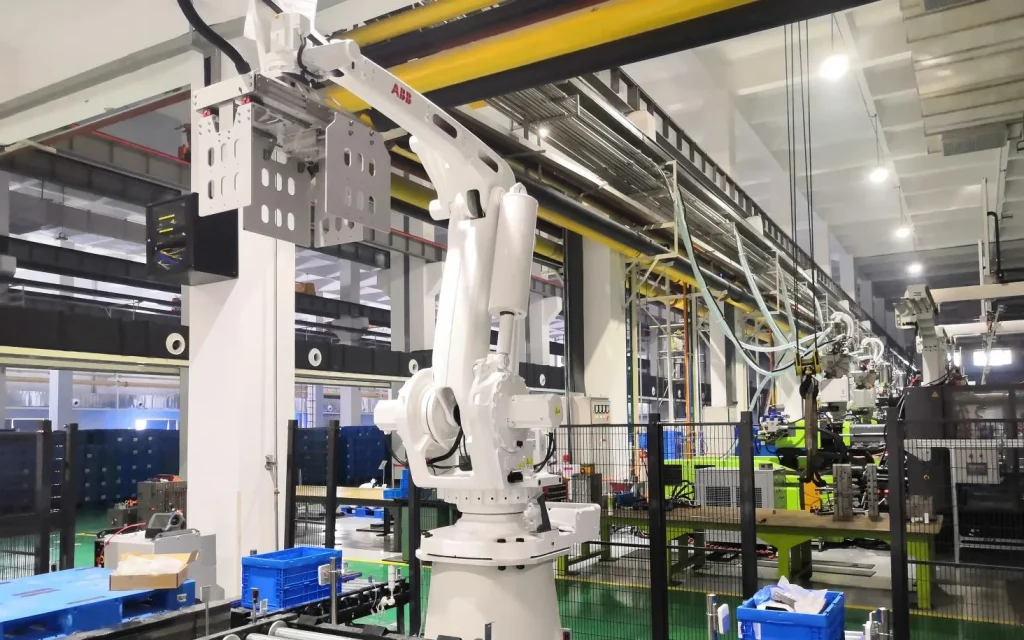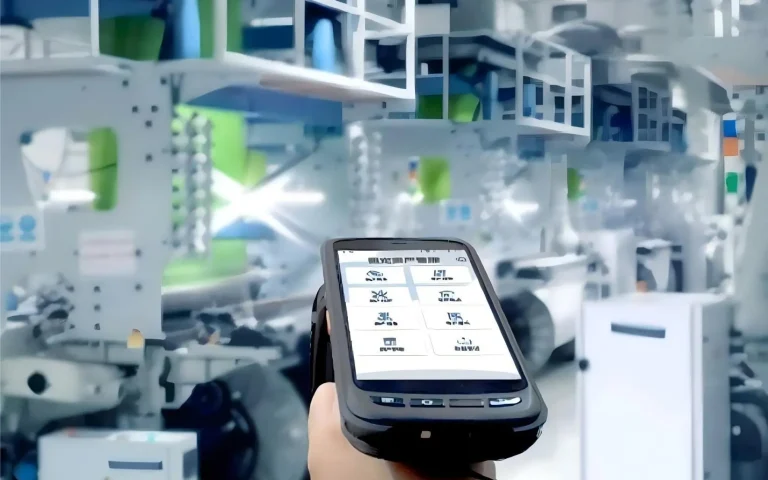
Smart Industrial Management
Automated Production Management\Passive Wireless Power Temperature Measurement
1. Automated Production Management
In traditional manufacturing enterprises, daily management primarily focuses on product management, quality control, warehouse operations, mobile asset tracking, on-site personnel management, fleet management, and similar areas. Production line data collection typically relies on manual gathering and input methods. This manual approach suffers from significant inaccuracies and high error rates. Furthermore, manual input can only be performed at scheduled intervals, forcing production plans to be submitted on a weekly or monthly basis rather than with daily precision. Production data within the system cannot be updated in real time, resulting in severe delays that hinder smooth production processes and constrain further increases in production capacity. Simultaneously, most functional departments within manufacturing enterprises still rely on basic pen-and-paper recording methods. This leads to substantial data errors across most functional departments, reducing the overall productivity of the enterprise.
Ultra-high frequency RFID hardware does not interfere with existing security systems, personal computers, telephones, or other electronic devices. The system is also harmless to humans and does not affect the normal functioning of hearing aids, pacemakers, and other devices. Ultra-high frequency RFID hardware also does not affect any magnetic media, including library cards, credit cards, videotapes, etc.
1.1 Solution
RFID-based production line management employs advanced automatic identification technology across production lines, product transfer zones, and temporary storage warehouses. Reusable electronic tags (each featuring a unique ID number and a writable data zone for storing product information) are utilized. Readers are installed at production line exit stations and warehouse entrances/exits. By reading and writing tag information, the system automatically records and collects product data at each location. This data is shared with other MES systems, Information is simultaneously displayed on screens, enabling production line operators to track products throughout the entire process—from line-off to warehouse transfer, temporary storage, and re-entry into production—based on corresponding prompts.
1.2 System Revenue
- Production data is collected accurately and in real time.
- Productivity has been enhanced from the original baseline.
- Real-time order tracking ensures timely delivery.
1.4 Development and Outlook
With the development of the library industry, cities and campuses have deployed a variety of self-service borrowing devices, including self-service reading rooms, self-service libraries, and book pickup cabinets. Self-service library devices are deployed in classrooms, self-service reading rooms are deployed in crowded areas, and book pickup cabinets are deployed in student dormitories, ultimately achieving an expanded deployment model of “library+.”
2. Passive Wireless Power Temperature Measurement
Cable joint failures, as operational time increases, can lead to loosening of crimped joints, insulation aging, partial discharge, and high-voltage leakage. These issues cause heating and temperature rise, further deteriorating operational conditions and driving temperatures higher. This vicious cycle ultimately triggers short circuits, explosions, or even fires.
Traditional temperature measurement methods involve lengthy cycles, complex installation, low efficiency, and inconvenient management. When faults occur, extensive manual troubleshooting and cable reinstallation are required. In specific scenarios—such as dispersed monitoring points, enclosed environments, or high-voltage conditions—many temperature measurement methods become impractical. Furthermore, high temperatures severely impact batteries, preventing normal batteries from operating for extended periods. Replacing batteries in power equipment is highly cumbersome. Consequently, passive wireless temperature monitoring systems have emerged as a solution.
2.1 System Architecture
System Solution for RFID Wireless Temperature Sensing.
First, temperature sensor tags of various forms are affixed to measurement points, with their EPC numbers recorded in relation to each point’s location. The reader collects temperature data from electronic tags at each point via its antenna, transmitting the data through ModBus or 485 bus. Final data can be transmitted to the cloud via DTU or displayed on remote monitoring terminals.
The system employs the EPC C1 Gen2 protocol for RFID wireless temperature sensing; Operating frequency: 920MHz–925MHz; Reading range: 1.2–8 meters; System operating temperature range: -40°C to 150°C; System environmental temperature tolerance range: -40°C to 225°C; Temperature accuracy: ±1°C; All tags are anti-metal tags; Mounting methods include screws, adhesive labels, snap-on clips, and straps; Protection rating: IP53–IP65.
2.3 Solutions
- Low-Voltage Switchgear Connector Temperature Monitoring Solution
- Ring Main Unit Plug Temperature Monitoring Solution
- Medium-Voltage Switchgear Moving Contact and Busbar Temperature Monitoring Solution




